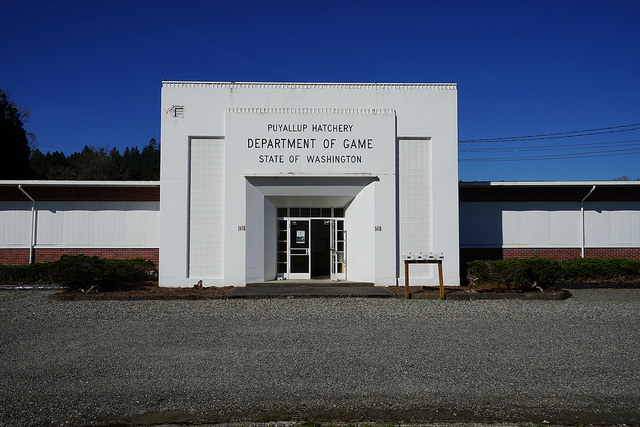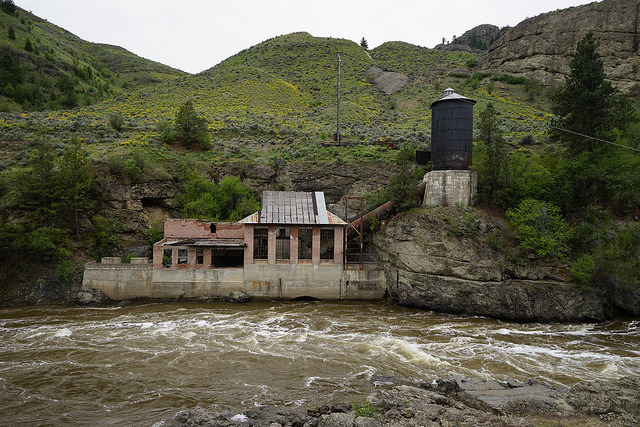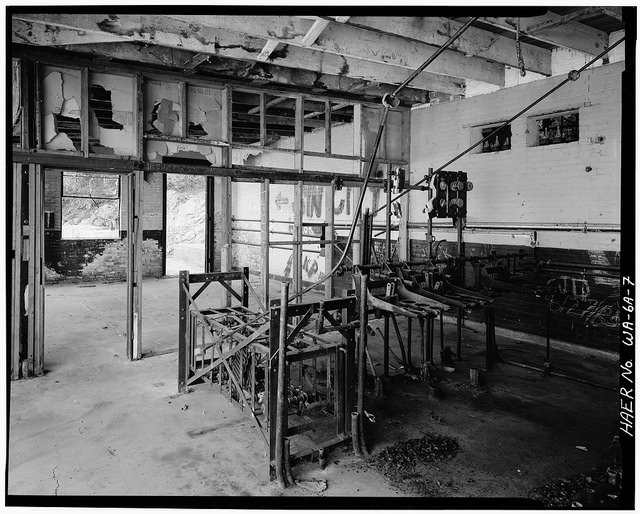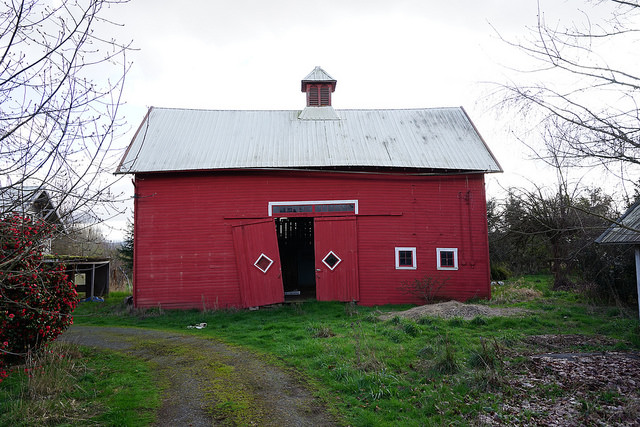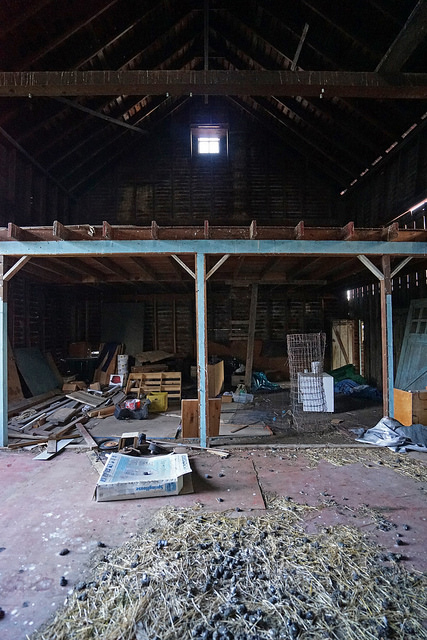Puyallup Fish Hatchery
Status: Saved!
Year Listed: 2016
Location: Pierce County
Update: The Puyallup Fish Hatchery is now open to the public year-round during daylight hours. The onsite Educational Center is open on Saturdays from 10:00 a.m.-2:00 p.m., staffed by volunteers from the Puyallup Historical Hatchery Foundation. Learn more: https://www.cityofpuyallup.org/1204/Fish-Hatchery.
In 1946, the Washington State Department of Game, known today as the Department of Fish and Wildlife, acquired 160 acres of the Maplewood Springs Watershed in Puyallup. The goal: access to an abundant supply of clear spring water for the production of game fish. The ensuing hatchery complex, built in 1948, consists of a natural, gravity-fed water supply, various raceways, sixteen round ponds, an incubation building, a shop building, and residences for operators. The design of the main building is hybrid in nature as it takes cues from public structures built during the late 1930s and more modern, post-WWII era construction methods and materials. The facility continues to remain in active use, but is slated to be converted to meet a need for more salmon production. Local advocates are concerned the National Register listed complex will be adversely impacted by the changes needed for the impending conversion. The project offers a unique adaptive re-use opportunity, however, and the opportunity for much needed improvements: the facility overall needs substantial repair and efficiency upgrades. The Department of Fish & Wildlife has expressed optimism that a thoughtful rehabilitation will result in an updated facility that retains its historic character while meeting agency needs for salmon production. Agency officials understand the educational and historic importance of the hatchery and are engaging with the community and other concerned parties in order to ensure positive outcomes for the historic complex.

